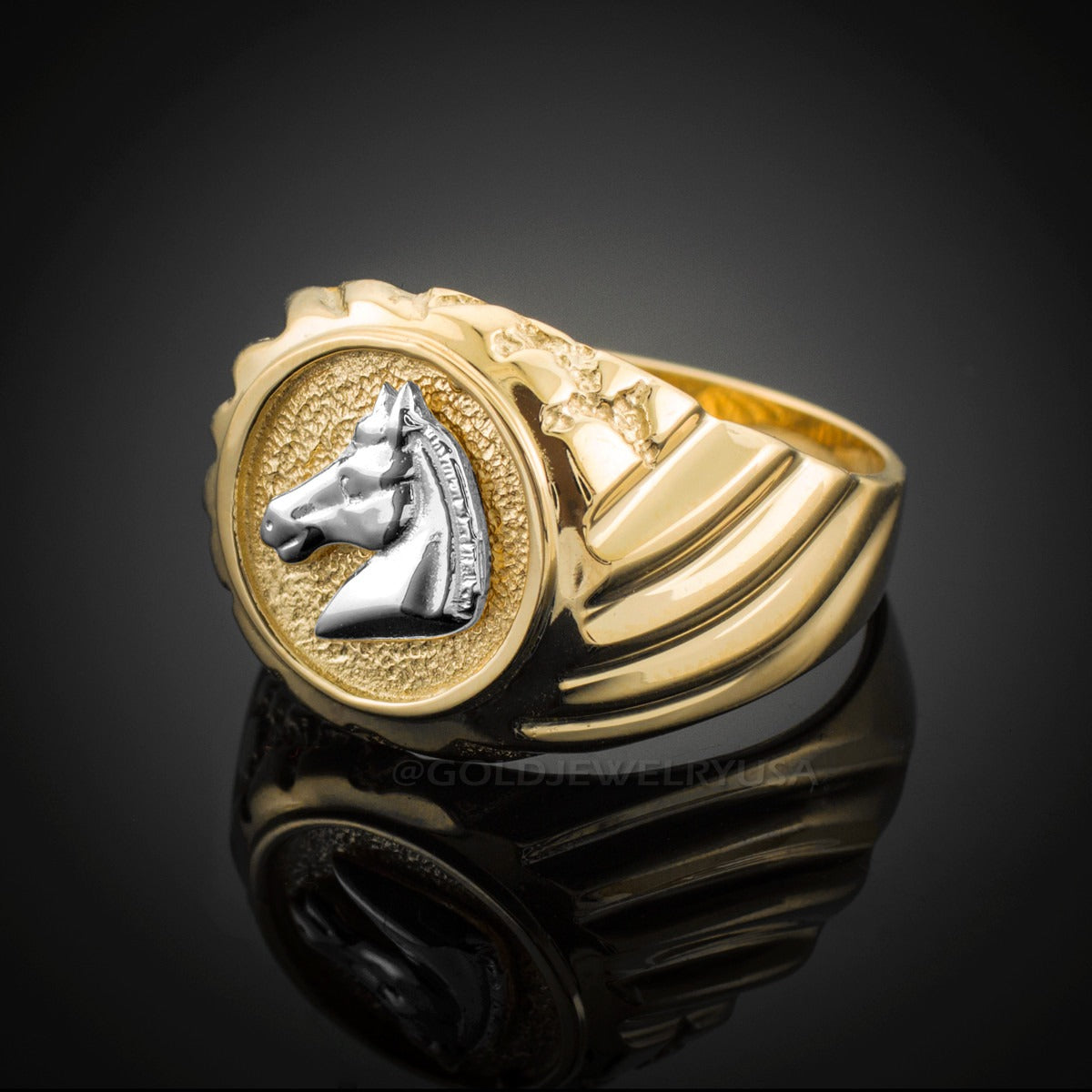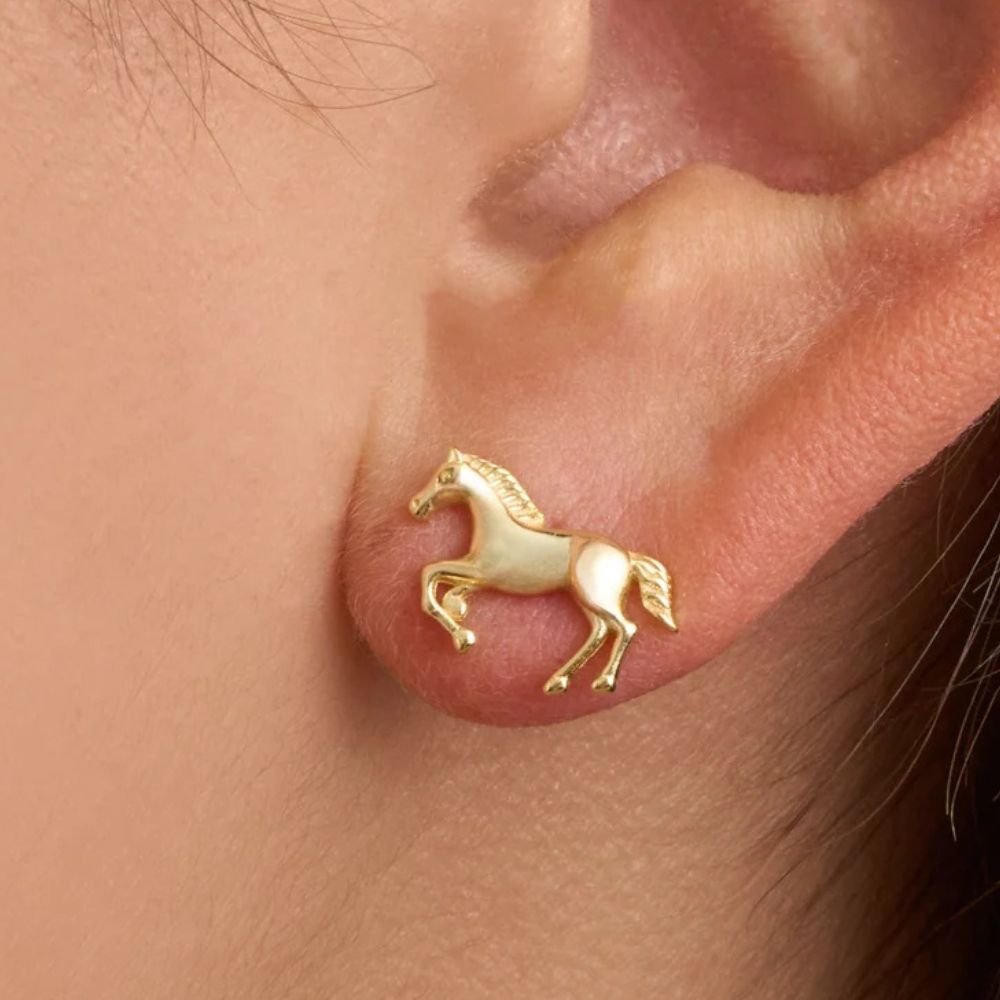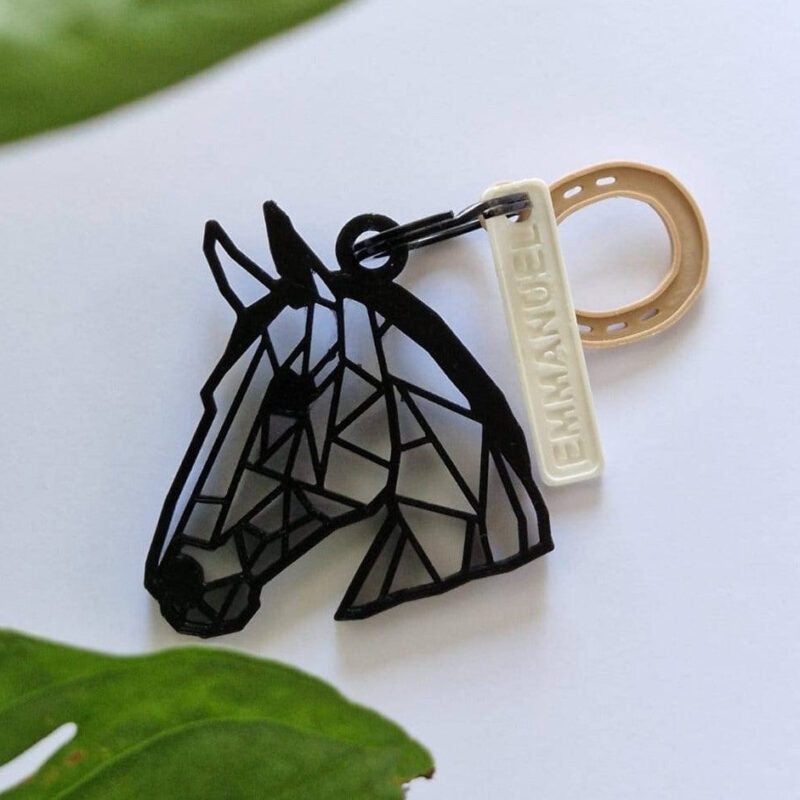
Is There a Weight Limit to Ride a Horse? Complete Guide for Responsible Riders
Yes, there absolutely is a weight limit to ride a horse! The golden rule that most equestrians follow is the 20 percent rule – meaning a horse should ideally carry no more than 20% of its body weight, including the rider and tack. For example, a 1,000-pound horse should carry a maximum of 200 pounds total. However, this isn't just about numbers on a scale. Rider weight safety depends on multiple factors including the horse's conformation and weight, fitness level, riding discipline, and the physical condition of the horse carrying weight. Understanding horse riding weight limit guidelines isn't about exclusion – it's about horse welfare riding weight and ensuring both you and your equine partner enjoy comfortable, pain-free rides for years to come. Whether you're a beginner wondering "is 250 lbs too heavy to ride a horse" or an experienced rider looking to make ethical choices, this guide covers everything you need to know about equine carrying capacity and responsible horsemanship. 🐴
Understanding the Science Behind Horse Weight Limits
The conversation about maximum rider weight has evolved significantly over the past two decades. Back in 2008, a landmark study by Dr. Sue Dyson from the Animal Health Trust in the UK revolutionized how we think about weight-to-horse ratio. Her research, published in the Journal of Veterinary Behaviour, examined horses carrying different weight ratios and measured their stress responses through gait analysis and behavior observation.
The findings were eye-opening. Horses carrying more than 20% of their body weight showed measurable signs of discomfort including changes in gait, increased heart rate, and behavioral indicators of stress. This research established what we now know as the 20 percent rule – though it's worth noting that this is a guideline, not an absolute law carved in stone.
What the Research Really Tells Us
Dr. Dyson's work wasn't the only game-changer. In 2013, further studies conducted by Ohio State University examined the physiological impact of different rider weights on various horse breeds. The results reinforced earlier findings and added crucial nuance: a well-conditioned horse with excellent conformation could sometimes carry slightly more than 20% comfortably, while a horse with back problems or poor conditioning struggled even with lighter loads.
Here's what affects equine carrying capacity beyond just the numbers:
The horse's skeletal structure plays a massive role. Think of it like the foundation of a building – some structures are simply built to carry more weight. A draft horse carrying capacity far exceeds that of a lightweight Arabian or Thoroughbred. A stocky Quarter Horse with a short back and strong hindquarters can typically carry more than a long-backed, narrow horse of the same weight.
The horse's conformation and weight relationship works like this: horses with shorter backs distribute weight more evenly across their spine. Those with wider loins have more muscle to support a rider. Horses with well-angled shoulders and strong hindquarters can propel themselves forward more efficiently even when carrying substantial weight.
As equine veterinarian Dr. Rachel Murray noted in a 2019 interview with Horse & Hound magazine: "We've moved beyond the one-size-fits-all approach to rider weight. Today, we assess each horse individually, considering their job, fitness level, and structural soundness."
Is 250 lbs Too Heavy to Ride a Horse? Breaking Down the Numbers
This is honestly one of the most frequently asked questions in the equestrian community, and the answer is: it depends. I know that's not the definitive response you might want, but let me break down exactly what it depends on and how to determine horse carrying ability for your specific situation.
The Math That Matters
Let's do some real calculations to understand is 250 lbs too heavy to ride a horse. If you weigh 250 pounds and need to add approximately 25-40 pounds for a saddle and tack (Western saddles can weigh more), you're looking at a total load of 275-290 pounds.
Using the 20 percent rule, you'd need a horse weighing at least 1,375-1,450 pounds to stay within safe parameters. That's absolutely achievable! Many horse breed weight limits accommodate this perfectly:
Draft horses like Percherons, Belgians, and Shires typically weigh between 1,600-2,400 pounds. A 1,800-pound draft horse could comfortably carry 360 pounds, giving you plenty of cushion.
Draft crosses (half draft, half light breed) often weigh 1,400-1,600 pounds – perfect for the 250-275 pound range.
Larger Quarter Horses and Paint Horses can weigh 1,200-1,400 pounds when fully mature and well-conditioned.
Warmbloods bred for sport often reach 1,300-1,600 pounds.
Now, if you're wondering is 300 lbs too heavy to ride a horse, the answer becomes more nuanced. At 300 pounds plus tack (325-340 pounds total), you'd need a horse of 1,625-1,700 pounds minimum. This typically means looking at draft horses or very large draft crosses. The pool of appropriate horses narrows, but it's absolutely not impossible.
Beyond the Scale: Other Critical Factors
Rider experience and weight impact go hand-in-hand. Here's why: an experienced rider with excellent balance and core strength distributes their weight more evenly and moves with the horse's motion. A beginner rider, regardless of weight, often bounces in the saddle, grips with their legs incorrectly, and creates uneven pressure points. A 180-pound beginner can be harder on a horse's back than a 220-pound experienced rider.
Weight distribution on a horse matters enormously. Think about carrying a backpack – would you rather carry 30 pounds in a properly fitted pack that distributes weight across your hips and shoulders, or 25 pounds in a bag dangling from one shoulder? The same principle applies to horses.
Assessing Your Perfect Match
Watch the horse move without a rider first. Does it move freely and comfortably? Any signs of stiffness or reluctance? A horse dealing with horse back pain rider weight issues will show subtle (or not-so-subtle) signs of discomfort.
Weight Restrictions at Riding Stables and Trail Centers: What to Expect
If you've ever felt anxious about calling a riding stable to ask about their weight restrictions at riding stables, you're not alone. Many riders experience genuine anxiety about this conversation, but understanding why these policies exist can help ease those concerns.
Why Stables Set Weight Limits
Weight limit for riding lessons and weight limit for trail riding exist primarily for three reasons: horse welfare, liability, and practical management. Most commercial stables set their limits between 200-250 pounds, though some that specialize in accommodating larger riders may go higher with appropriate horses.
In 2021, a survey of riding facilities across the United States found that approximately 68% had formal weight policies, while the remaining 32% assessed riders on a case-by-case basis. Facilities with weight limit for horseback riding tours tend to be more stringent because trail horses work longer hours and face varied terrain.
The Reality of Commercial Operations
Here's the honest truth: most lesson barns and trail riding operations use smaller horses – typically in the 900-1,100 pound range. These horses are often chosen because they're easier to handle, cost less to feed and maintain, and work well for children and average-sized adults. This means their equine carrying capacity naturally falls in the 180-220 pound range (including tack).
However, progressive stables are changing this model. More facilities now keep one or two larger horses specifically for heavier riders. Some have invested in draft crosses or sturdy Haflingers and Norwegian Fjords (which, despite being pony-sized in height, have incredible pony weight carrying limit capabilities due to their stocky build).
Having the Conversation
When calling about riding lessons weight restrictions, be direct but informed. Try something like: "I weigh approximately [your weight] and I'm interested in lessons. Do you have horses that would be appropriate for my size?"
Professional facilities will appreciate your honesty and should respond with information about their horses without making you feel uncomfortable. If they respond poorly or make you feel ashamed, that's a red flag about their professionalism – not about you.
Many forward-thinking stables now list their accommodations right on their websites. Look for phrases like "riders of all sizes welcome" or specific mention of draft horses and weight-appropriate mounts.
As renowned horseman Buck Brannaman once said: "Your horse is a mirror to your soul, and sometimes you might not like what you see. Sometimes you will." This applies to responsible horse selection too – it's about honest self-assessment and respect for our equine partners.
Choosing the Right Horse: Breed, Build, and Biomechanics
Selecting a horse that can comfortably carry you isn't just about finding the heaviest horse available. Horse height and weight carrying aren't directly correlated – a 16-hand horse isn't automatically better than a 15-hand horse for carrying weight. What matters is the total package: bone density, muscle development, back length, and overall structural integrity.
Draft Horses: The Obvious Champions
When discussing draft horse carrying capacity, we're talking about horses literally bred for centuries to pull heavy loads and carry substantial weight. These gentle giants typically excel at carrying heavier riders comfortably.
Percherons combine draft power with surprising athleticism. Weighing 1,800-2,600 pounds, they're often gentler than their size suggests and many have been successfully trained for riding disciplines from trail riding to dressage.
Belgian Drafts are the heavyweight champions, often exceeding 2,000 pounds. Their calm temperaments make them excellent choices for nervous riders who also happen to need a larger mount.
Shires are the tallest draft breed and incredibly powerful. However, their massive size can be intimidating for some riders.
Clydesdales combine strength with flashy movement. They're slightly lighter than Belgians but still plenty substantial for heavy riders.
The Underrated Middle Ground
Don't overlook these breeds when considering factors affecting horse carrying capacity:
Draft Crosses might be your perfect match. A half-Percheron, half-Quarter Horse can give you a 1,400-1,600 pound horse with better agility than a full draft and more carrying capacity than a light breed. These crosses often excel at varied riding disciplines.
Irish Draughts and Irish Sport Horses were bred to carry full-grown farmers across rough terrain all day. They typically weigh 1,300-1,500 pounds with excellent bone and substance.
Gypsy Vanners pack an incredible amount of muscle and bone into a relatively small (14-15 hand) package. Many can comfortably carry 220-250 pounds despite their shorter stature.
Haflingers and Norwegian Fjords are technically ponies, but don't let that fool you. These breeds have dense bone, powerful hindquarters, and can often carry 20-25% of their body weight comfortably. A 1,000-pound Haflinger isn't uncommon, giving them a solid 200-pound carrying capacity.
Morgans, particularly the classic, stocky type, often have exceptional equine carrying capacity relative to their size. A well-built Morgan of 1,000-1,100 pounds can be an excellent mount for a 180-200 pound rider.
What to Look For in Conformation
When assessing horse weight tolerance, examine these key structural points:
Short, strong back – Long backs sag under weight like a weak bridge. A horse with a short-coupled back (less distance between the last rib and the hip) naturally carries weight better.
Wide, flat croup – This indicates strong loin muscles that support the rider's weight.
Good bone – Measure around the cannon bone (below the knee). A measurement of 8 inches or more indicates substantial bone that can support more weight.
Well-muscled hindquarters – The horse's engine lives in the back end. Strong hindquarters propel the horse forward and lift the back to support the rider.
Check out our equestrian jewelry collection where you can find beautiful pieces celebrating the magnificent draft breeds and stocky horses that make riding accessible to everyone! 💎
Protecting Your Horse: Signs of Weight-Related Stress and Solutions
Understanding how much weight can a horse carry is only half the equation. The other crucial half is recognizing when your horse is telling you the current weight is too much. Horses can't speak English, but they communicate clearly through body language and behavior if you know what to watch for.
Red Flags That Demand Attention
Horse back pain rider weight issues manifest in both subtle and obvious ways. I've seen riders miss these signs for months or even years, causing their beloved horses unnecessary suffering. Don't be that rider.
Watch for these warning signs during riding:
-
Reluctance to move forward or "stickiness" when asked to go
-
Head tossing or ear pinning when you mount
-
Hollow back or "cold back" behavior (hunching when first mounted)
-
Uneven gait or shortened stride
-
Difficulty picking up or maintaining a canter
-
Tail swishing excessively
-
Attempting to bite or kick when being saddled
After riding, check for:
-
Dry spots under the saddle (indicating excessive pressure points)
-
White hairs in the saddle area (permanent damage from pressure)
-
Sensitivity when you run your hand along the back
-
Muscle atrophy along the topline
-
Reluctance to be touched in the back area
The Saddle Fit and Rider Weight Connection
Here's something many riders don't realize: saddle fit and rider weight are intimately connected. A saddle that fit perfectly when the horse carried a 150-pound rider may become a torture device with a 220-pound rider.
Heavier riders need saddles with:
Wider weight distribution – The saddle's panels should be wider and longer to spread weight across more surface area.
Stronger tree – A reinforced tree prevents the saddle from collapsing and pinching the horse's back.
Appropriate gullet width – Too narrow and it pinches the spine; too wide and it sits directly on the spine.
Consider investing in a custom-fitted saddle or at minimum having a professional saddle fitter assess your setup. The $200-400 you spend on proper fitting will save you thousands in veterinary bills and, more importantly, keep your horse comfortable and sound.
Building Your Horse's Carrying Capacity
A horse's ability to carry weight isn't fixed – it can be improved through proper conditioning. Think of it like strength training for humans. Physical condition of the horse carrying weight improves dramatically with correct work.
Start with groundwork and hill work. Leading your horse up and down hills (without a rider) strengthens the hindquarters and back muscles. Do this 2-3 times weekly for 20-30 minutes.
Progress to lunging and long-lining with focus on engaging the hindquarters and lifting the back. Use transitions between gaits to build strength.
Under saddle, focus on exercises that encourage your horse to use their core:
Walk-halt transitions with good engagement build strength without strain.
Lateral work (leg yields, shoulder-in) at walk and trot activates core muscles.
Hill work under saddle (once the horse is fit enough) is gold for building carrying capacity.
Cavaletti work at walk and trot teaches the horse to lift their back and engage their abdominals.
Consulting the Experts: Equine Veterinarian Weight Recommendations
Don't guess about your horse's soundness. Annual veterinary examinations should include frank discussions about rider weight safety and whether your horse shows any signs of strain.
X-rays can reveal early signs of kissing spine, arthritis, or other structural issues that impact carrying capacity. Thermography can identify areas of inflammation or pain that might not be obvious externally.
A veterinary evaluation becomes especially important if you're asking "How much weight can a horse carry" and your horse is older (15+), has a previous injury history, or shows any signs of discomfort.
Many riders worry about impact of excessive rider weight but never actually consult professionals to assess their specific situation. A pre-purchase exam or soundness evaluation typically costs $150-500 but provides invaluable peace of mind.
Making Ethical Choices: Responsible Horsemanship and Weight Considerations
The conversation about ethical horse riding weight has intensified in recent years, and honestly, that's a good thing. As horse lovers, we must prioritize our horses' welfare above our own egos or desires. Responsible horsemanship weight considerations aren't about discrimination – they're about compassion.
The Ethics Framework
Veterinary guidance on rider weight generally follows these principles:
First, do no harm. If you're at the absolute maximum of what a horse can carry, you're already pushing into potentially harmful territory. Aim to be well under the 20% threshold, not right at it.
Second, consider longevity. Sure, a horse might be able to carry 25% of their body weight for a short ride without immediate obvious harm. But what about the cumulative effect over years? Chronic stress to joints, ligaments, and spinal structures adds up.
Third, acknowledge that equine stress rider weight isn't just physical. Horses that struggle to carry their riders often develop behavioral issues, anxiety, and learned helplessness. The psychological welfare of the horse matters too.
When the Answer Is "Not This Horse"
Sometimes the most loving thing you can do is admit a particular horse isn't right for you. This doesn't make you a bad person or a failed equestrian. It makes you a responsible one.
If you've fallen in love with a delicate 900-pound Arabian and you weigh 220 pounds, the math simply doesn't work. That doesn't mean you can never ride – it means you need a different horse. The Arabian deserves a lighter rider, and you deserve a horse built to carry you comfortably.
Guidelines for Making the Right Choice
When evaluating guidelines for rider weight, use this decision-making framework:
Calculate the total weight (your weight plus tack) and divide by the horse's weight. If the result is over 0.20 (20%), stop here. This horse isn't appropriate.
If you're between 15-20%, assess the horse's conditioning, conformation, age, and soundness. A young, fit, well-built horse might be fine. An older horse with any soundness issues is not.
If you're under 15%, you're likely in a very comfortable range for most horses.
Consider your riding frequency and intensity. Carrying you twice a week for 45-minute trail rides is different from daily jumping or dressage schooling.
Be honest about your riding skill. Advanced riders with excellent balance and position are easier for horses to carry than beginners who bounce and grip.
Resources for Larger Riders
The equestrian community is slowly becoming more inclusive and acknowledging that riders come in all sizes. Organizations like the Curvy Riders movement and online communities provide support, resources, and connections to appropriate horses and trainers.
Look for trainers and facilities that specifically mention accommodating larger riders. These professionals typically have appropriate horses and won't make you feel uncomfortable about your size.
Consider purchasing rather than leasing or taking lessons if you're a heavier rider. This allows you to find the perfect horse for your build and invest in proper saddle fit without restrictions.
Frequently Asked Questions on Horse Riding Weight Limits
Is there a weight limit to ride a horse?
Yes, there is definitely a weight limit to ride a horse, though it varies by individual horse. The widely accepted guideline is the 20 percent rule, meaning a horse should carry no more than 20% of its body weight (including tack and rider). For a 1,000-pound horse, this equals approximately 200 pounds total. However, factors affecting horse carrying capacity include the horse's breed, conformation, fitness level, age, and soundness.
How do you calculate the weight-to-horse ratio?
To calculate weight-to-horse ratio, add your body weight plus the weight of your saddle and tack (typically 25-40 pounds). Divide this total by your horse's weight, then multiply by 100 to get a percentage. For example: (220 lbs rider + 30 lbs tack) ÷ 1,200 lbs horse = 0.208, or about 21%. This exceeds the recommended 20% threshold.
Is 250 lbs too heavy to ride a horse?
Is 250 lbs too heavy to ride a horse depends entirely on finding the right horse. At 250 pounds plus tack (approximately 275-290 pounds total), you'd need a horse weighing at least 1,375-1,450 pounds to stay within the 20% guideline. Many draft horses, draft crosses, and larger warmbloods easily accommodate this weight. The key is matching rider weight to appropriate horse breed weight limits.
What horse breeds are best for heavier riders?
Breeds with excellent equine carrying capacity for heavier riders include Percherons, Belgians, Shires, Clydesdales, draft crosses, Irish Draughts, Gypsy Vanners, sturdy Quarter Horses, and Haflingers. These breeds typically have the bone density, muscling, and conformation to comfortably carry more weight. Draft horse carrying capacity often exceeds 400-500 pounds due to their size and structure.
What are signs my horse can't carry my weight?
Signs of horse back pain rider weight issues include reluctance to move forward, head tossing when mounted, hollow or sensitive back, shortened stride, difficulty maintaining gaits, tail swishing, and behavioral changes like pinned ears or attempted biting during saddling. White hairs under the saddle area indicate permanent pressure damage. If you notice these signs, consult an equine veterinarian weight recommendations specialist immediately.
Do riding stables have weight limits?
Yes, most commercial stables have weight restrictions at riding stables, typically ranging from 200-250 pounds. These riding lessons weight restrictions exist to protect horse welfare and ensure safety. Trail riding operations may have stricter weight limit for trail riding policies because horses work longer hours on varied terrain. Always ask about weight policies before booking to avoid disappointment.
Can you improve a horse's weight carrying ability?
Yes! The physical condition of the horse carrying weight significantly impacts carrying capacity. Proper conditioning through hill work, core-strengthening exercises, and gradual fitness building can improve a horse's ability to carry weight comfortably. However, this doesn't mean you can push beyond safe maximum rider weight thresholds – it means a fit horse within appropriate weight limits will perform better and stay sounder than an unconditioned horse.
What is the 20 percent rule and is it accurate?
The 20 percent rule states that horses should carry no more than 20% of their body weight. This guideline comes from scientific research, particularly Dr. Sue Dyson's 2008 study showing horses carrying more than 20% exhibited stress signs. While useful, it's not absolute – horse's conformation and weight tolerance varies individually. Some well-built horses handle 20% easily while others struggle with 15% due to age, soundness, or structural issues.
Is 300 lbs too heavy to ride a horse?
Is 300 lbs too heavy to ride a horse is a more challenging scenario but not impossible. At 300 pounds plus tack (325-340 pounds total), you need a horse weighing at least 1,625-1,700 pounds, which typically means draft horses or very large draft crosses. While the pool of appropriate horses narrows considerably, ethical horse riding weight matching is possible with dedicated searching and proper assessment of horse weight tolerance.
How does saddle fit affect weight carrying?
Saddle fit and rider weight are critically connected. A poorly fitted saddle concentrates weight on small pressure points rather than distributing it across the horse's back. Heavier riders need saddles with wider panels, stronger trees, and appropriate gullet width. Investing in professional saddle fitting is essential for horse welfare riding weight considerations and prevents painful pressure points that can cause permanent damage.
What should I do if I'm too heavy for my horse?
If you've determined you exceed safe guidelines for rider weight for your current horse, you have several responsible horsemanship weight options: find a larger, more appropriate horse; work with a trainer on a suitable mount; or focus on groundwork and bonding activities with your current horse while riding a more appropriate horse. The impact of excessive rider weight on long-term soundness is too significant to ignore. Making ethical choices demonstrates true horsemanship and love for your equine partner.






















